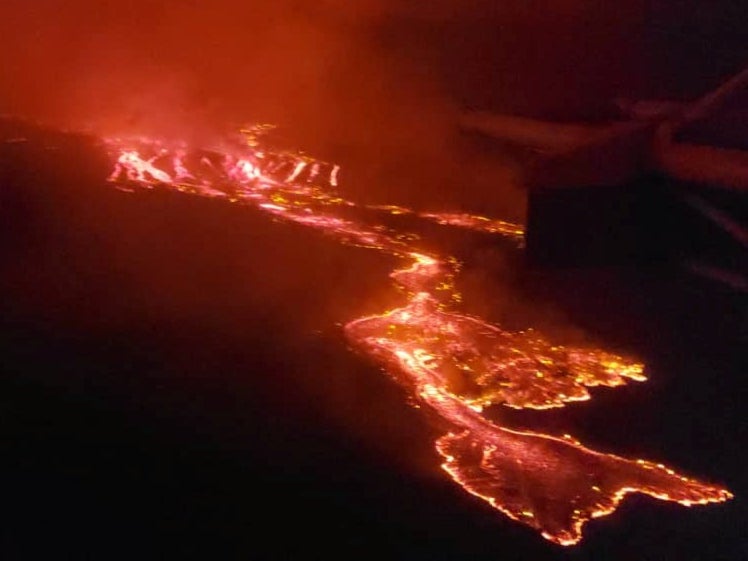Your support helps us to tell the story
From reproductive rights to climate change to Big Tech, The Independent is on the ground when the story is developing. Whether it's investigating the financials of Elon Musk's pro-Trump PAC or producing our latest documentary, 'The A Word', which shines a light on the American women fighting for reproductive rights, we know how important it is to parse out the facts from the messaging.
At such a critical moment in US history, we need reporters on the ground. Your donation allows us to keep sending journalists to speak to both sides of the story.
The Independent is trusted by Americans across the entire political spectrum. And unlike many other quality news outlets, we choose not to lock Americans out of our reporting and analysis with paywalls. We believe quality journalism should be available to everyone, paid for by those who can afford it.
Your support makes all the difference.At least 15 people have died and hundreds more left homeless after a volcano erupted near the city of Goma in the Democratic Republic of the Congo (DRC).
Mount Nyiragongo, which lies just six miles north of the two-million strong city of Goma, began erupting on Saturday night with little warning.
Torrents of lava poured down its slopes and tore through villages, forcing tens of thousands of locals to flee for their lives.
Nine people died in traffic accidents as the roads became choked with cars trying to escape the eruption, four others died while trying to escape a prison, and two more were burned to death, a government spokesperson told the media.
However, the death toll is expected to rise significantly once the authorities are able to properly reach the affected region and assess the situation.
Hundreds of people, including 170 children, are missing and locals in the villages hit by the lava flow have told reporters they knew of dozens of deaths not yet counted by officials.
The lava stopped just short of Goma itself, sparing the city’s two million inhabitants, but cut a swathe through seventeen smaller villages between the metropolis and the volcano.
Patrick Muyaya, the government spokesperson, said three health centres, a primary school and a water pipeline were among the facilities destroyed by the eruption. The main highway running north was also overwhelmed by lava, along with Goma’s main electricity supply line.

By Sunday morning the lava seemed to have stopped flowing, piling up in mounds up to three storeys high as it cooled. The black mark left across the landscape on the side of Mount Nyiragongo is almost a kilometre wide.
The devastation looks to be less serious than in 2002, when the volcano last erupted spewing lava into Goma, killing hundreds and leaving more than 100,000 people homeless.
But the recovery efforts are expected to take many months and those whose homes have been destroyed said they were unsure how they would survive.
"I am asking for help because everything we had is gone," one local, Aline Bichikwebo, said.
She managed to escape clutching her young baby, but her mother and father were among those killed by the lava, she said. She had tried to pull her father to safety but was not strong enough to drag him out of their home before it was consumed by lava.
“We don’t even have a pot. We are now orphans and we have nothing,” she lamented.
"People are still panicking and are hungry," another resident Alumba Sutoye said. "They don’t even know where they are going to spend the night."
"We have seen the loss of almost an entire neighbourhood," Innocent Bahala Shamavu said. "All the houses in Buhene neighbourhood were burned and that’s why we are asking all the provincial authorities and authorities at the national level as well as all the partners, all the people of good faith in the world, to come to the aid of this population."
Ernestine Kabuo also saw her sick husband killed by the eruption as he was too unwell to flee their home as the lava approached.
"I said to myself, I can’t go alone, we’ve been married for the best and for the worst," she said, walking in a daze and crying, surrounded by buildings swallowed by lava.
"I went back to at least try to get him out but couldn’t. I ran away and he got burned inside. I don’t know what to do. I curse this day."
There are fears warning signs Mount Nyiragongo was about to erupt were missed by the Goma Volcano Observatory (OVG) because their internet access was cut off for several months and only restored in April.
“As soon as the internet was restored, we had started recording the warning signals, but since we did not have previous data, we thought it was the start of volcanic activity,” the Observatory’s scientific director Celestin Kasereka Mahinda told local radio. “Hence this surprise."
Internet access was cut off after the OVG’s funding was removed by the World Bank over allegations of corruption.

Join our commenting forum
Join thought-provoking conversations, follow other Independent readers and see their replies
Comments